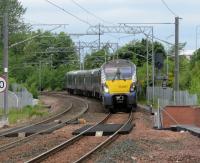Longridge to Bathgate (Edinburgh and Glasgow Railway)
Introduction
This 1850 extension of the Wilsontown, Morningside and Coltness Railway (1845) to the Edinburgh and Bathgate Railway (1849) from Longridge to Bathgate left both Bathgate [1st] and Longridge [1st] stations on short branches. Bathgate Upper was to open later (1880).
Why built
This extension was first considered by the Wilsontown, Morningside and Coltness Railway in 1849, it was a logical extension there being much coal in the Torbane and Bathgate areas and the Edinburgh and Bathgate Railway had just opened. This extension would make the line a constituent in an alternative Edinburgh to Glasgow route.
The Wilsontown, Morningside and Coltness Railway was merged with the Edinburgh and Glasgow Railway in 1849.
The extension line was built by the Edinburgh and Glasgow Railway who had no physical connection.
This purchase had consolidated the E&G position in the area by blocking the Caledonian Railway from buying the line and creating a short Edinburgh to Glasgow route. This new line connected their Wilsontown, Morningside and Coltness Railway purchase to nearby friendly lines.
Dates
Portions of line and locations
This line is divided into a number of portions.
Longridge to Bathgate
This was the main portion of the line.
This was a short lived replacement for Longridge [1st], just to the south, the original terminus of the Wilsontown, Morningside and Coltness Railway.
...
This was a single platform station, the stone built platform on the north side of the line on the west side of a level crossing, and with a goods yard to the south, approached from the west. A stone station building stood on the platform.
...
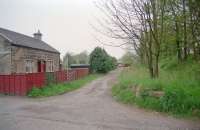
Ewan Crawford 03/05/1997
This junction, also known as Foulshiels Junction, was immediately south of the level crossing by the former Foulshiels station. There was a long passing loop on the main route running south from the junction, accommodated by the line here having been prepared for two tracks, and a short passing loop on the branch line.
...
See also
Addiewell Branch (North British Railway)
This short lived station had a single platform on the east side of the line. It was just to the north of a level crossing close to West Foulshiels farm.
...
This station had a brick built station building on the platform. The platform was on the west side of a loop, the line being single track to north and south. There were sidings on either side, approached from the south.
...
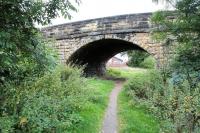
John Furnevel 23/09/2013

Ewan Crawford 03/05/1997
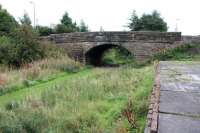
John Furnevel 23/09/2013
This was a shale oil works. Paraffin was distilled here from coal and oil shale, the process invented and patented by the chemist James Young. The works was opened with Edward Meldrum and Edward William Binney as E.W. Binney & Co. in 1851. The process was perfected by 1856.
...
The original trackbed here was built for two lines by the Edinburgh and Glasgow Railway extending the Wilsontown, Morningside and Coltness Railway from Longridge [1st] to Bathgate East Junction [1st]. The eastbound only was laid at opening.
...
This was a four way junction in the west of Bathgate. Today the location is a double track electrified railway with no junction.
...
See also
Torbanehill and Bathgate Branch (Monkland Railways)

Robin McGregor 15/02/1965

Charlie Niven 01/04/2008
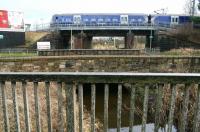
John Furnevel 19/12/2019
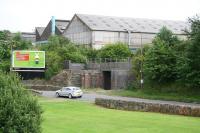
John Furnevel 31/07/2008
This was a two platform through station built on a curve in the south of Bathgate. The main station building was on the eastbound platform. The building had a large canopy. Opposite was a NB style waiting room.
...
See also
Bathgate Loop (North British Railway)
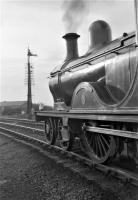
Robin McGregor 16/10/1965
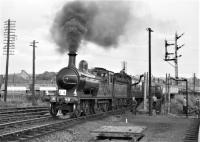
Robin McGregor 16/10/1965
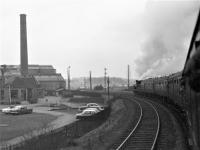
...
Robin McGregor 11/04/1966
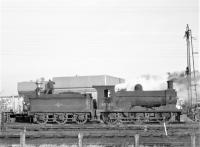
Robin McGregor 08/01/1965
This junction was created in 1850 when the 1849 Edinburgh and Bathgate Railway was met by the Longridge to Bathgate (Edinburgh and Glasgow Railway) line just east of Bathgate [1st] station. The connection faced Edinburgh, allowing goods and minerals to run through whereas passenger trains would need to reverse to reach Bathgate station.
...
See also
Edinburgh and Bathgate Railway
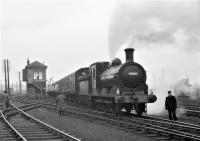
Robin McGregor 11/04/1966

Robin McGregor 08/01/1965
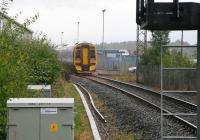
John Furnevel 19/08/2008
Whitrigg Colliery Branch
This ran from south of Whitburn station to the Whitrigg Colliery.
This station had a brick built station building on the platform. The platform was on the west side of a loop, the line being single track to north and south. There were sidings on either side, approached from the south.
...

John Furnevel 23/09/2013

Ewan Crawford 03/05/1997

John Furnevel 23/09/2013
Riddochhill Colliery
This was a two platform through station built on a curve in the south of Bathgate. The main station building was on the eastbound platform. The building had a large canopy. Opposite was a NB style waiting room.
...
See also
Bathgate Loop (North British Railway)

Robin McGregor 16/10/1965

Robin McGregor 16/10/1965

...
Robin McGregor 11/04/1966

Robin McGregor 08/01/1965
This foundry was operated by the North British Steel Foundry Ltd, associated with the Menzies family. It was opened in 1907 and made track components for the railway industry.
...










